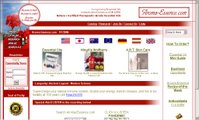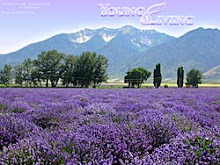Human/Clinical Studies
No studies in the published peer-reviewed literature discuss aromatherapy as a treatment for cancer. The studies discussed below, most of which were conducted in patients with cancer, primarily focus on other health-related conditions and on quality of life measures such as stress and anxiety levels.
Among the fewest articles published on the subject are clinical trials involving
aromatherapy. A major review published in 2000 [1] focused on 6 studies investigating treatment or prevention of anxiety with aromatherapy massage. The studies suggested that aromatherapy massage had a mild transient anxiolytic effect.
A review undertaken in 2004 investigated whether aromatherapy and/or massage decreased psychological morbidity, lessened symptom distress, or improved quality of life in cancer patients.[2] The review reported that the most consistently found effect of massage or aromatherapy massage was on anxiety, with 4 of the trials (a total of 207 patients) reporting a reduction in anxiety.
Of 3 trials that examined depression in cancer patients, one reported significant differences. Two trials reported a reduction in nausea, and 3 reported a reduction in pain. The authors concluded that massage and aromatherapy confer benefits on psychological well-being.
Several of the studies included in the Cochrane Database of Systematic Reviews are discussed in more detail. A randomized controlled pilot study examined the effects of adjunctive aromatherapy massage on mood, quality of life, and physical symptoms in patients with cancer.[3]
Forty-six patients were randomly assigned to conventional day care alone or day care plus weekly aromatherapy massage using a standardized blend of oils for 4 weeks. Patients self-rated their mood, quality of life, and the intensity of the 2 symptoms that were the most concerning to them at the beginning of the study and at weekly intervals thereafter.
Of the 46 patients, only 11 of 23 (48%) in the aromatherapy group and 18 of 23 (78%) in the control group completed all 4 weeks. Patient-reported mood, symptoms, and quality of life improved in both groups, and there was no statistically significant difference between the 2 groups in any of these measures.
Another randomized controlled trial examined the effects of aromatherapy massage and massage alone on 42 patients with advanced cancer over a 4-week period.[4] Patients were randomly assigned to receive weekly massages with or without aromatherapy; the treatment group (aromatherapy group) received massages with lavender essential oil (Lavandula angustifolia Miller [synonyms: Lavandula spicata L.; Lavandula vera DC.]) and an inert carrier oil, and the control group (massage group) received either an inert carrier oil alone or no intervention.
The authors reported no significant long-term benefits of aromatherapy or massage in pain control, quality of life, or anxiety, but sleep scores (as measured by the Verran and Snyder-Halpern sleep scale) improved significantly in both groups. The authors also reported statistically significant reductions in depression scores (as measured by the Hospital Anxiety and Depression Scale [HADS]) in the massage-only group.
A placebo-controlled double-blind randomized trial conducted in Australia investigated the effects of inhalation aromatherapy on anxiety during radiation therapy.[5] A total of 313 patients receiving radiation therapy were randomly assigned to 1 of 3 groups: carrier oil with fractionated oils, carrier oil only, or pure essential oils of lavender, bergamot (Citrus aurantium L. ssp. bergamia [Risso] Wright & Arn. [Rutaceae]; [synonym: Citrus bergamia Risso]), and cedarwood (Cedrus atlantica [Endl.] Manetti ex Carriere [Pinaceae]).
All 3 groups received the oils by inhalation during their radiation therapy. The authors reported no significant differences in depression (as measured by HADS) or psychological effects (as measured by the Somatic and Psychological Health Report [SPHERE]) between the groups. The group that received only the carrier oil showed a statistically significant decrease in anxiety (as measured by HADS) compared with the other 2 groups.
Another randomized controlled trial investigated the effects of massage or aromatherapy massage in 103 cancer patients who were randomly assigned to receive massage using a carrier oil (massage group) or massage using a carrier oil plus the Roman chamomile essential oil (Chamaemelum nobile [L.] All. [synonym: Anthemis nobilis L.]) (aromatherapy massage group).[6]
Two weeks after the massage, the authors found a statisically significant reduction in anxiety in the aromatherapy massage group (as measured by the State-Trait Anxiety Inventory [STAI]) and an improvement in symptoms (as measured by the Rotterdam Symptom Checklist [RSCL]; the subscales with improved scores were psychological, quality of life, severe physical, and severe psychological).
A study whose primary objective was evaluating an aromatherapy service following changes made after an initial pilot at a UK cancer center also reported on the experiences of patients referred to the service.[7] Of 89 patients originally referred, 58 completed 6 aromatherapy sessions.
The authors reported significant improvements in anxiety and depression (as measured by HADS) at the completion of the 6 sessions, as compared with before the 6 sessions. A small study examined the physical and psychological effects of aromatherapy massage in 8 patients with primary malignant brain tumors attending their first follow-up appointment after radiation therapy.[8]
The author reported no psychological benefit in these patients from aromatherapy massage (as measured by HADS) but reported a statistically significant reduction in blood pressure, pulse, and respiratory rate.
References
1. Cooke B, Ernst E: Aromatherapy: a systematic review. Br J Gen Pract 50 (455): 493-6, 2000. [PUBMED Abstract]
2. Fellowes D, Barnes K, Wilkinson S: Aromatherapy and massage for symptom relief in patients with cancer. Cochrane Database Syst Rev (2): CD002287, 2004. [PUBMED Abstract]
3. Wilcock A, Manderson C, Weller R, et al.: Does aromatherapy massage benefit patients with cancer attending a specialist palliative care day centre? Palliat Med 18 (4): 287-90, 2004. [PUBMED Abstract]
4. Soden K, Vincent K, Craske S, et al.: A randomized controlled trial of aromatherapy massage in a hospice setting. Palliat Med 18 (2): 87-92, 2004. [PUBMED Abstract]
5. Graham PH, Browne L, Cox H, et al.: Inhalation aromatherapy during radiotherapy: results of a placebo-controlled double-blind randomized trial. J Clin Oncol 21 (12): 2372-6, 2003. [PUBMED Abstract] 1.
6. Wilkinson S, Aldridge J, Salmon I, et al.: An evaluation of aromatherapy massage in palliative care. Palliat Med 13 (5): 409-17, 1999. [PUBMED Abstract]
7. Kite SM, Maher EJ, Anderson K, et al.: Development of an aromatherapy service at a Cancer Centre. Palliat Med 12 (3): 171-80, 1998. [PUBMED Abstract]
8. Hadfield N: The role of aromatherapy massage in reducing anxiety in patients with malignant brain tumours. Int J Palliat Nurs 7 (6): 279-85, 2001. [PUBMED Abstract]
Maria Schasteen is the owner of
Aroma-essence.com and publisher of the Aromatherapy Tip of the Week.
 Are you lonely during the holidays? Home alone? Nobody to talk to? Don't be sad. This too shall pass. I'll tell you a secret ...
Are you lonely during the holidays? Home alone? Nobody to talk to? Don't be sad. This too shall pass. I'll tell you a secret ...





